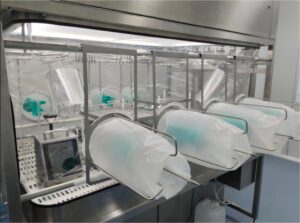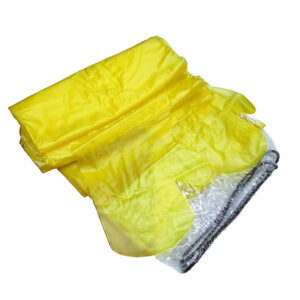In the highly regulated industries of pharmaceuticals and biotechnology, maintaining a high level of contamination control is critical. Understanding the differences between Barrier Systems (RABS) and Isolators can significantly impact the choice of technology for cleanroom environments. YOUTH, a premier manufacturer of cleanroom and biosafety equipment, provides state-of-the-art solutions to ensure optimal contamination control.
Understanding Barrier Systems (RABS)
Restricted Access Barrier Systems (RABS) are designed to create a controlled environment within cleanrooms, minimizing contamination risks while allowing some degree of operator interaction.
Key Features of RABS:
- Physical Barrier: Typically made of glass or acrylic panels, this barrier separates the critical processing area from the external environment.
- HEPA Filters: High-efficiency particulate air filters to ensure unidirectional airflow, maintaining sterility.
- Glove Ports: Allow operators to handle products and equipment within the clean environment without breaching the sterile barrier.
- Interlock Doors: Prevent simultaneous opening, minimizing contamination risk during material transfers.
Explore more about our RABS solutions for superior contamination control.
Understanding Isolators
Isolators provide a higher level of contamination control by creating a completely sealed environment. This prevents any external particulates from entering the critical processing area, thus ensuring the highest level of sterility.
Key Features of Isolators:
- Complete Sealing: Ensures no contaminant ingress.
- Advanced Air Filtration: Utilizes HEPA filters to maintain a sterile environment.
- Pressure Control: Can maintain positive or negative pressure depending on the application.
- Hands-On Manipulation: Through integrated glove ports.
- Automated Systems: Often equipped with systems for automated decontamination and sterilization.
Discover the superior features of YOUTH’s Sterility Test Isolators for unmatched sterility.
Key Differences Between Barrier Systems and Isolators
1. Level of Contamination Control:
- Isolators offer superior contamination control by maintaining a completely sealed environment, making them ideal for highly sensitive processes that require the utmost sterility.
- RABS provide significant contamination control through physical barriers and air filtration but allow for more operator interaction.
2. Flexibility and Accessibility:
- RABS are more flexible and allow for greater operator interaction through glove ports and controlled access points, making them suitable for processes that require frequent manual interventions.
- Isolators limit direct operator interaction to maintain an ultra-sterile environment, reducing the risk of contamination from human error.
3. Installation and Cost:
- RABS are generally more cost-effective and easier to install compared to isolators, making them a practical choice for facilities looking to upgrade their contamination control systems without significant investment.
- Isolators may require more substantial investment due to their advanced sealing and air filtration systems but offer the highest level of sterility.
4. Application Scenarios:
- Isolators are ideal for aseptic filling, sterility testing, and handling hazardous materials, where absolute sterility is mandatory.
- RABS are versatile and used in various processes requiring a balance of contamination control and operator accessibility, such as in biotechnology and semiconductor manufacturing.
Complementary Products by YOUTH
YOUTH provides an array of advanced cleanroom and biosafety equipment to ensure optimal contamination control and operational efficiency. Our product portfolio includes:
- FFU (Fan Filter Units)
- Frog Showers
- Sterile Liquid Transfer Port
- Gel Seal HEPA Filter
- Modular Cleanrooms
- Cleanroom Dunk Tank
- Cleanroom Wall & Ceiling Panels
Conclusion
Understanding the differences between Barrier Systems (RABS) and Isolators is vital for making informed decisions in contamination control. Isolators offer superior sterility and are ideal for highly sensitive processes, while RABS provide greater operational flexibility and are more cost-effective. Both technologies play a crucial role in maintaining contamination-free environments in the pharmaceutical and biotechnology industries.
At YOUTH, we are committed to advancing cleanroom technology standards through innovation and quality. Our advanced RABS and Isolator solutions ensure the highest levels of contamination control, tailored to meet the stringent requirements of medical and pharmaceutical manufacturing.
For more information about how YOUTH’s cleanroom technologies can enhance your operations, visit YOUTH Filter. Optimize your cleanroom environments with our state-of-the-art RABS and Isolator systems, ensuring the highest standards of safety and efficiency in your industry.
Related Contents:
- C-RABS & O-RABS: Why & How?
- What is the Difference Between Active and Passive RABS Systems?
- What is the Main Advantage of Using Either RABS or a Barrier Isolator?
- The Ins and Outs of Isolation & RABS: A Guide to Selecting the Right Choice
- RABS vs. Isolator – Choosing the Right Isolation Technology for Your Project
- What is the Difference Between RABS and Isolator?
- Bag-In/Bag-Out (BIBO) Systems: Operation and Maintenance Guide
- Aseptic Processing: Isolators or RABS?
- What Does the Acronym RABS, oRABS Stand For?




























